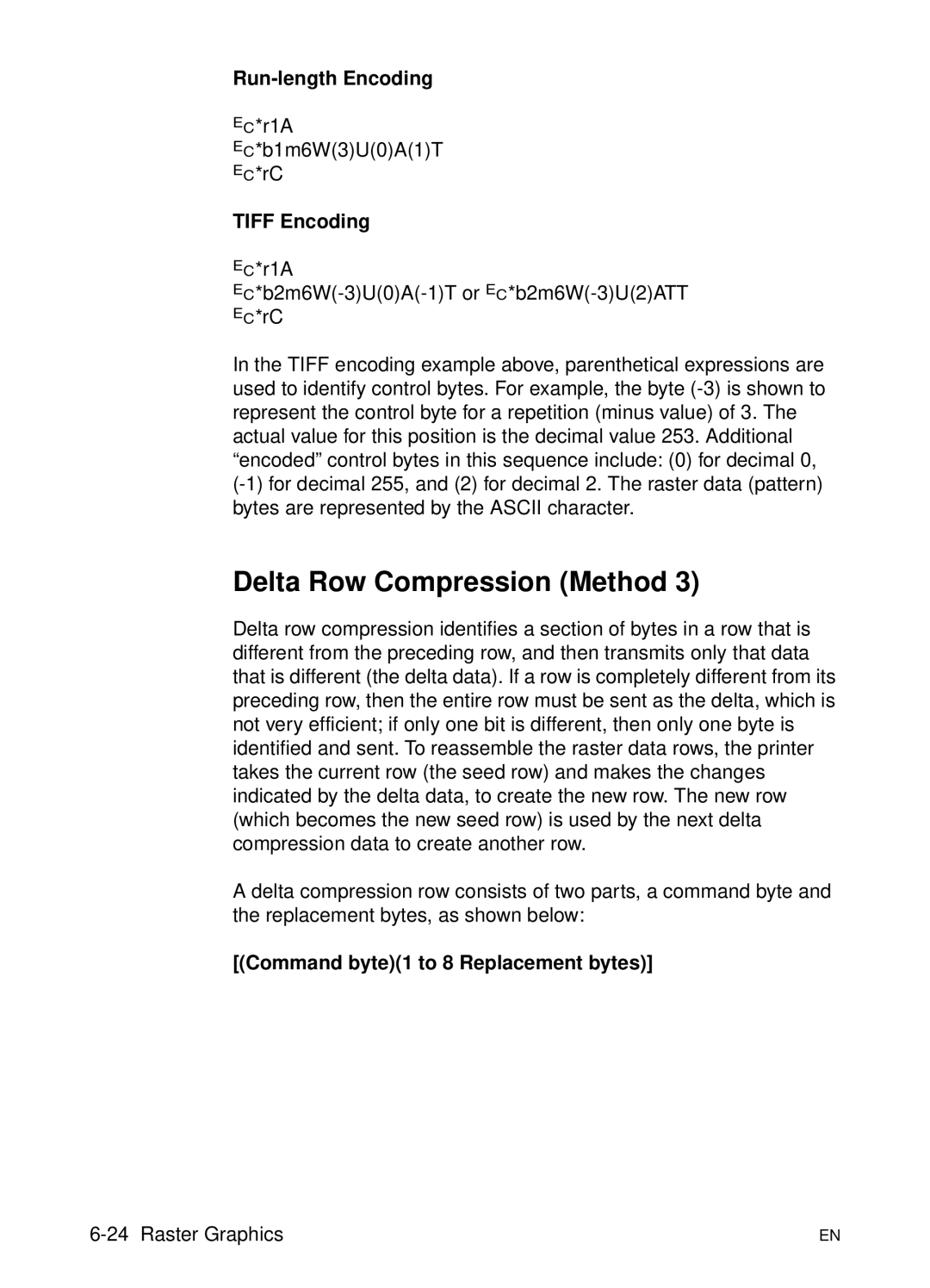Run-length Encoding
?*r1A
?*b1m6W(3)U(0)A(1)T ?*rC
TIFF Encoding
?*r1A
In the TIFF encoding example above, parenthetical expressions are used to identify control bytes. For example, the byte
Delta Row Compression (Method 3)
Delta row compression identifies a section of bytes in a row that is different from the preceding row, and then transmits only that data that is different (the delta data). If a row is completely different from its preceding row, then the entire row must be sent as the delta, which is not very efficient; if only one bit is different, then only one byte is identified and sent. To reassemble the raster data rows, the printer takes the current row (the seed row) and makes the changes indicated by the delta data, to create the new row. The new row (which becomes the new seed row) is used by the next delta compression data to create another row.
A delta compression row consists of two parts, a command byte and the replacement bytes, as shown below:
[(Command byte)(1 to 8 Replacement bytes)]
EN |
